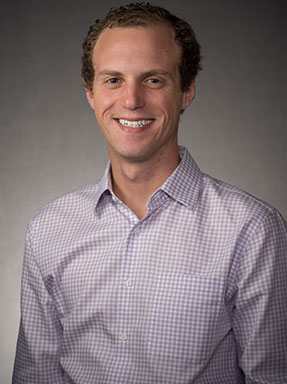Lights, camera, classroom: Professors and students adapt to new classroom environment
COVID-19 is leaving a lasting mark on teaching

He works in the Daniels College of Business, but the way adjunct professor Patrick Orr prepares for classes, it can feel an awful lot like show business.
Before hopping online to teach — whether in the Daniels online MBA program or with faculty in professional development — Orr checks his microphone, adjusts his camera and readies his props. (In this case, it’s a tablet that acts as a whiteboard, digitally translating his notes to his students’ computer screens.)
The name of this production? “Teaching During a Pandemic.”
“Faculty now are the producer, director, writer, lighting technician, sound technician, makeup artist and content creator,” says Orr, who also serves as the Daniels director of global experiential operations. “And they need to pull all of that together when they teach. They are things our faculty hasn’t had to do in the past, but the pandemic has created this environment for you to systematically think about what you’re doing rather than just teaching to a single audience in a classroom.”
As early as the CD-ROM era, Orr was incorporating technology into his 22-year DU teaching career. But as COVID-19 injected uncertainty into classrooms from kindergarten to college, the University of Denver has had to adapt like never before.
To provide a high-quality education and keep students safe during the fall term, DU is offering classes in nontraditional formats and nontraditional locations. The solutions come out of Chancellor Jeremy Haefner’s Fall Logistics Task Force, which comprised numerous subcommittees focused on the emerging learning challenges.
In-person classes now take place everywhere from the Myhren Gallery in the Shwayder Art Building to study areas in the Anderson Academic Commons. DU is also offering online classes and “HyFlex” classes featuring in-person and online students in the same space.
“This is such a unique situation where the classroom and technology are so interwoven,” says Virginia Pitts, director of university teaching at the Office of Teaching and Learning (OTL). “I think we’ve done a really good job of getting ready for this. It was hard, and it was always going to be hard. I think DU has done a really great job of getting us here.”
Even before the coronavirus reached the United States, OTL went to work preparing faculty for the challenges that lay ahead: How would a professor engage in-person and online students at the same time? What about small group discussions or labs?
OTL aggregated as many resources as it could and passed along its knowledge through one-on-one appointments, teaching toolkits and its Course Design Institute, which soon saw twice as many participants as usual.
Meanwhile, the Information Technology Division outfitted spaces to accommodate newly purchased technology, including 175 Logitech all-in-one video stations, featuring a camera and a mic system connected to a mobile cart or a classroom monitor. They adjusted their hours, set up a chat-based help center and equipped student support staff to work remotely.
“It was a team effort,” says Theresa Hernandez, assistant vice chancellor of campus partnerships. “Everyone has been involved, trying to get creative and think outside the box. “It’s helped knowing there was 100% support from the senior administration to make this fall launch happen. They put funding behind a lot of this — for faculty to recreate their classes, classroom assistants to help them navigate the technology while they teach and help the students who are having difficulties.”
OTL director Leslie Cramblet Alvarez says there have been bumps along the way but that the effort has gone better than expected. Even in a new environment, OTL is already taking note of best practices and preparing to apply them to future courses.
“We’re really thinking about the way we engage with our classrooms and with our students and making education more accessible,” Cramblet Alvarez says. “That to me has been a real silver lining of the HyFlex classroom and the time we’re finding ourselves in.”
Other positive side effects have appeared too. The pandemic has strengthened partnerships among units; the use of technology on campus has accelerated; students can now hear from guest speakers from all over the world via video chat; and faculty are finding new ways to engage with students.
Perhaps best of all, Pitts says, DU is building a strong foundation for the future of education while offering support on a more personal level.
“It’s exciting to see that we’re pulling this off together,” she says. “I love that we’ve been able to be a part of helping people feel that sense of connection.”











